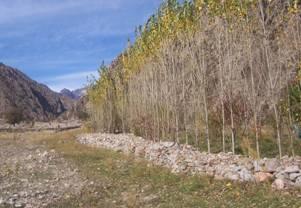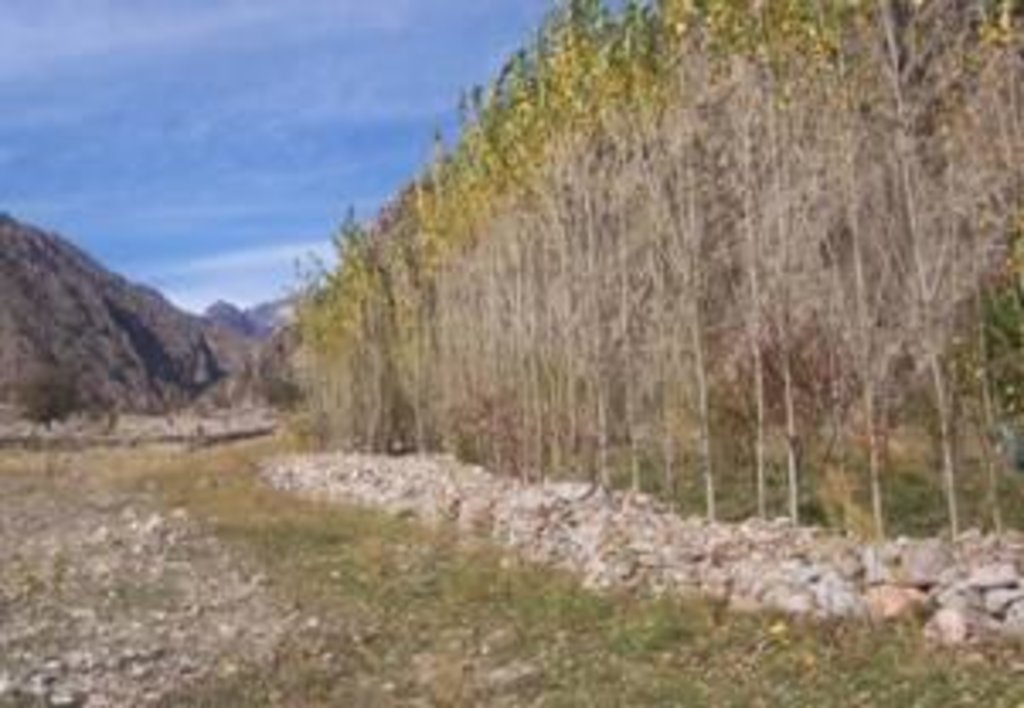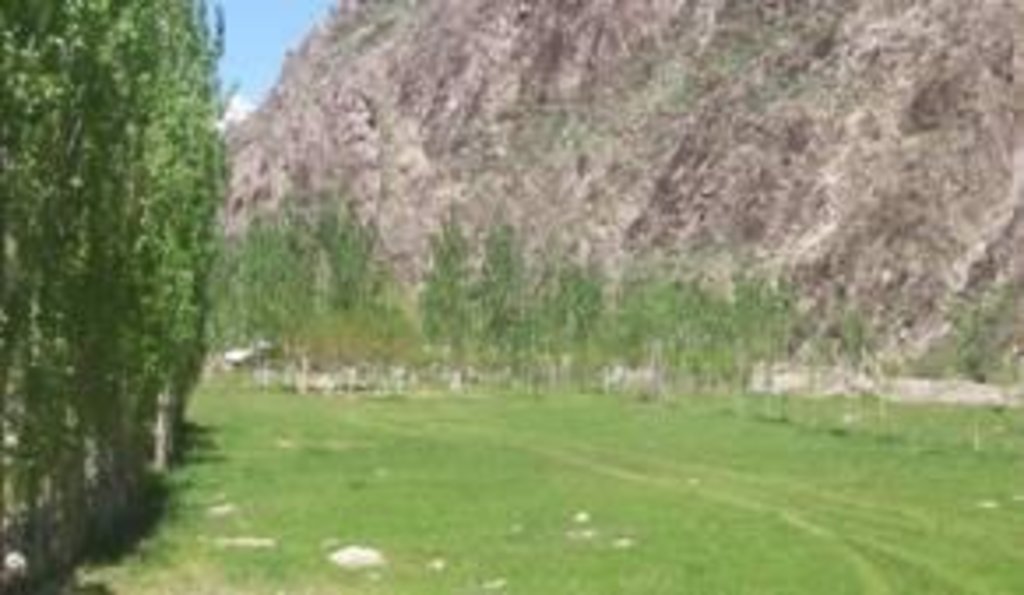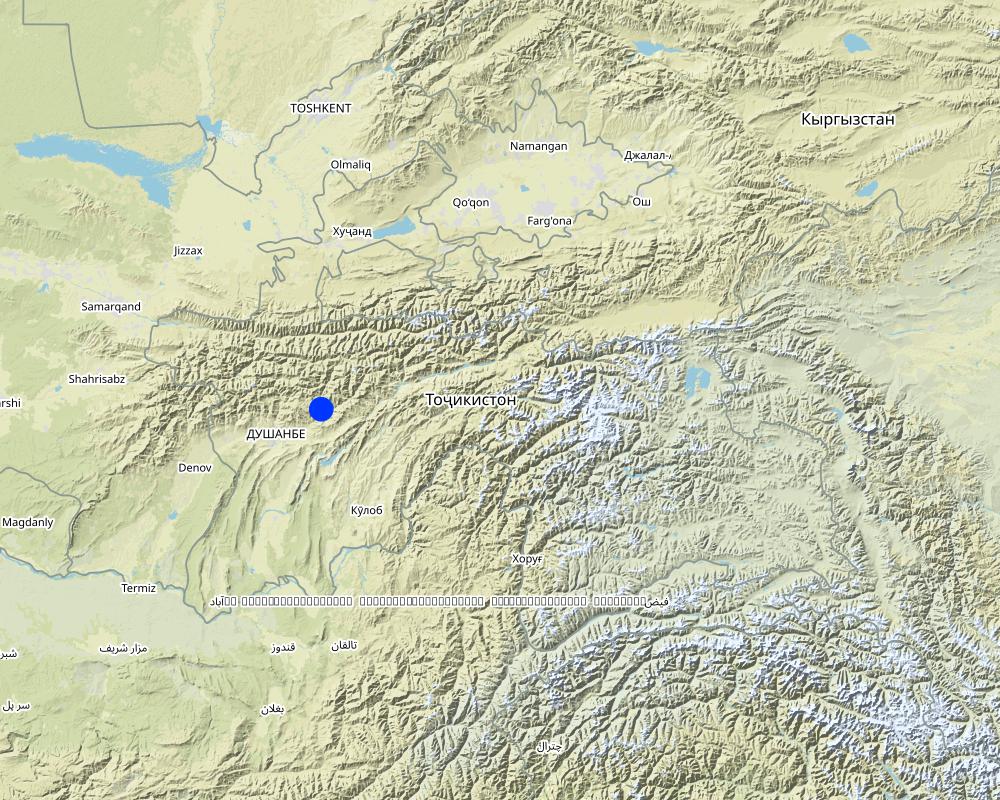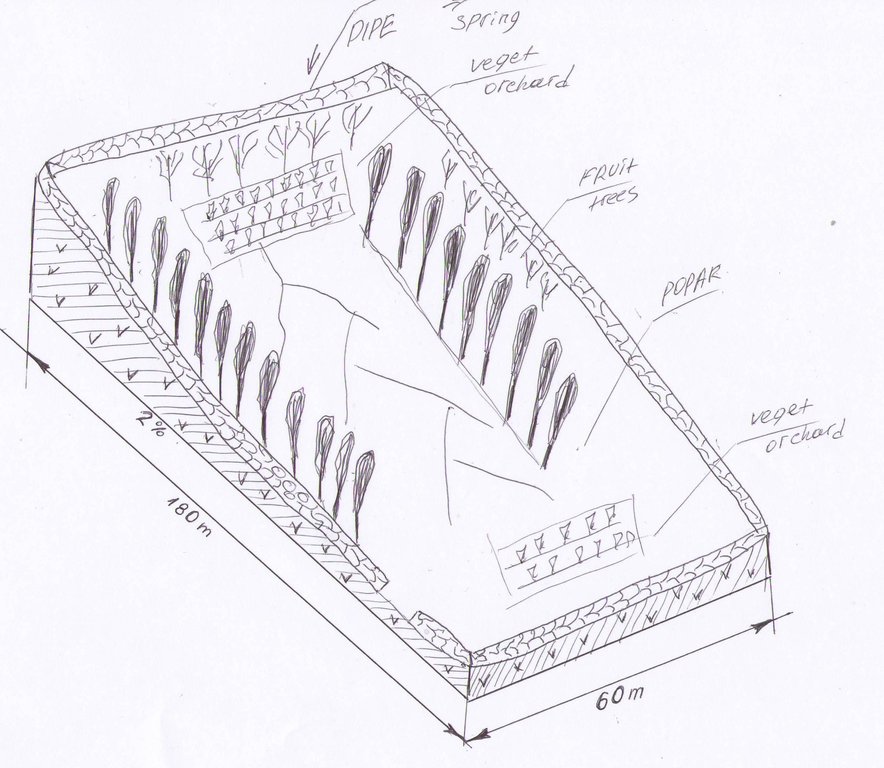Integrated stone wall and poplar tree perimeter fencing [Tajikistan]
- Creation:
- Update:
- Compiler: Habib Kamolidinov
- Editor: –
- Reviewers: Alexandra Gavilano, David Streiff, Joana Eichenberger
technologies_1107 - Tajikistan
- Full summary as PDF
- Full summary as PDF for print
- Full summary in the browser
- Full summary (unformatted)
- Integrated stone wall and poplar tree perimeter fencing: March 21, 2017 (inactive)
- Integrated stone wall and poplar tree perimeter fencing: July 23, 2017 (inactive)
- Integrated stone wall and poplar tree perimeter fencing: Aug. 14, 2019 (inactive)
- Integrated stone wall and poplar tree perimeter fencing: Nov. 2, 2021 (public)
View sections
Expand all Collapse all1. General information
1.2 Contact details of resource persons and institutions involved in the assessment and documentation of the Technology
SLM specialist:
Name of project which facilitated the documentation/ evaluation of the Technology (if relevant)
Pilot Program for Climate Resilience, Tajikistan (WB / PPCR)Name of the institution(s) which facilitated the documentation/ evaluation of the Technology (if relevant)
GITEC/ADB/DMC Rural Development Project Land Management Institute - Tajikistan1.3 Conditions regarding the use of data documented through WOCAT
The compiler and key resource person(s) accept the conditions regarding the use of data documented through WOCAT:
Yes
2. Description of the SLM Technology
2.1 Short description of the Technology
Definition of the Technology:
Stones cleared from land within a narrow valley floor where flat land is at a premium, was used to construct a perimeter stone wall which was subsequently supplemented with a row of poplar tree to protect an agro-forestry area with small scale supplementary irrigation.
2.2 Detailed description of the Technology
Description:
The area in question is a very narrow, flat valley floor, 95% of which was covered in stones and boulders, and devoid of vegetation, both grass and trees/shrubs. The stones in the area were cleared and used to build a protecting, perimeter wall (approx. 1.5 m high). This was then supplemented by an inner row of fast growing poplar trees. The stone clearing has resulted in deeper soil within the protected area that has led to far greater vegetation coverage, such as grass (that can be cut and used as fodder), forest and orchard trees and vegetable gardens. Irrigation was provided to the area by a small diameter poly pipe from a permanent spring. The area is now being extended to almost double the size of the initial walled agro-forest area.
Purpose of the Technology: The farmer’s primary aim, in initiating and continuing this SLM approach, was to “leave a legacy of improved land” for future generations, recognising how little flat and potentially productive land there is in this high, narrow valley location. Clearing the land of stones and building a walled enclosure that was irrigated greatly assured the quantity and quality of fodder for his animals, as they remain fenced in beside his village home almost all year. Fruit and vegetable production was also greatly improved.
Establishment / maintenance activities and inputs: The family commenced stone clearing and wall construction in 2005. The next task was tree planting; poplar trees were planted around the wall's perimeter. The irrigation source was tapped into using a poly pipe. The vegetable gardens are seasonal and their plants change with the seasons and the family’s needs. Stone removal continues even now, to improve the soil in the walled area. The farmer hopes to extend the walled area in the future.
Natural / human environment: Before the family began clearing stones and building the wall, this land had almost zero productivity. This area has a shortage of cultivated land and with increases in popluation and continued food insecurity, cultivated land is at a premium.
2.3 Photos of the Technology
2.5 Country/ region/ locations where the Technology has been applied and which are covered by this assessment
Country:
Tajikistan
Region/ State/ Province:
Central District of Tajikistan
Further specification of location:
Kushon village, Romit Jamoat, Vahdat
Specify the spread of the Technology:
- evenly spread over an area
If precise area is not known, indicate approximate area covered:
- < 0.1 km2 (10 ha)
Comments:
A small area was all that the family could manage as there was an initial large workload, clearing stones and fence building, etc
Map
×2.6 Date of implementation
If precise year is not known, indicate approximate date:
- less than 10 years ago (recently)
2.7 Introduction of the Technology
Specify how the Technology was introduced:
- through land users' innovation
Comments (type of project, etc.):
The initiative began in 2005 and has been ongoing ever since, it continues to improve, at least up to 2010 when reviewed.
3. Classification of the SLM Technology
3.1 Main purpose(s) of the Technology
- increase size of agrictultural land
3.2 Current land use type(s) where the Technology is applied
Land use mixed within the same land unit:
Yes
Specify mixed land use (crops/ grazing/ trees):
- Agroforestry
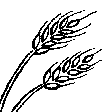
Cropland
- Annual cropping
- Perennial (non-woody) cropping
- Tree and shrub cropping
Tree and shrub cropping - Specify crops:
- stone fruits (peach, apricot, cherry, plum, etc)
- pome fruits (apples, pears, quinces, etc.)
Number of growing seasons per year:
- 1
Specify:
Longest growing period in days: 180Longest growing period from month to month: April to September
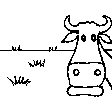
Grazing land
Animal type:
- cattle - dairy
- sheep
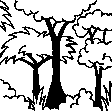
Forest/ woodlands
Products and services:
- Fuelwood
- Fruits and nuts
- Other forest products
Comments:
Major land use problems (compiler’s opinion): This area is strongly dependent on the extremely limited flat, valley bottom land for the production of pasture, 'cut and carry' fodder, orchards and vegetable production. 95% of this land is covered in stones that require removal before any productive capacity can be achieved. Even when cleared of stones the soil is still very shallow (< 20cm) and requires irrigation to ensure plants survive the hot summer months
Major land use problems (land users’ perception): Same – the above words were used by him in the on-farm interview
Cut-and-carry/ zero grazing: sheep/cattle
Plantation forestry: The Poplar trees they planted are pruned and thinned for firewood and construction materials
Other type of forest: orchard species: Apple, Apricot, Cherry
Forest products and services: timber, fuelwood, fruits and nuts
Future (final) land use (after implementation of SLM Technology): Grazing land: Gi: Intensive grazing/ fodder production
3.3 Has land use changed due to the implementation of the Technology?
Has land use changed due to the implementation of the Technology?
- Yes (Please fill out the questions below with regard to the land use before implementation of the Technology)

Grazing land

Other
Specify:
wastelands, deserts, glaciers, swamps, recreation areas, etc
3.4 Water supply
Water supply for the land on which the Technology is applied:
- mixed rainfed-irrigated
3.5 SLM group to which the Technology belongs
- agroforestry
- improved ground/ vegetation cover
3.6 SLM measures comprising the Technology
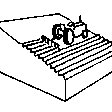
agronomic measures
- A1: Vegetation/ soil cover
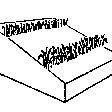
vegetative measures
- V1: Tree and shrub cover
- V2: Grasses and perennial herbaceous plants
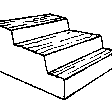
structural measures
- S6: Walls, barriers, palisades, fences
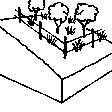
management measures
- M1: Change of land use type
- M2: Change of management/ intensity level
- M3: Layout according to natural and human environment
- M4: Major change in timing of activities
- M5: Control/ change of species composition
Comments:
Main measures: agronomic measures, vegetative measures, structural measures, management measures
Type of agronomic measures: better crop cover, mixed cropping / intercropping, cover cropping, retaining more vegetation cover, furrows (drainage, irrigation)
Type of vegetative measures: aligned: -along boundary, in blocks
3.7 Main types of land degradation addressed by the Technology
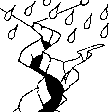
soil erosion by water
- Wt: loss of topsoil/ surface erosion
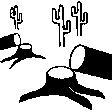
biological degradation
- Bc: reduction of vegetation cover
- Bh: loss of habitats
- Bq: quantity/ biomass decline
- Bl: loss of soil life
Comments:
Main type of degradation addressed: Wt: loss of topsoil / surface erosion, Bc: reduction of vegetation cover, Bh: loss of habitats, Bq: quantity / biomass decline, Bl: loss of soil life
Secondary causes of degradation: land tenure (The lack of good quality available land puts pressure on the lower grade land.), poverty / wealth (People still need land to harvest to survive.)
3.8 Prevention, reduction, or restoration of land degradation
Specify the goal of the Technology with regard to land degradation:
- restore/ rehabilitate severely degraded land
Comments:
Secondary goals: prevention of land degradation, mitigation / reduction of land degradation
4. Technical specifications, implementation activities, inputs, and costs
4.1 Technical drawing of the Technology
Technical specifications (related to technical drawing):
The drawing shows a 1.5m high stone wall, lined with poplar trees on a gentle slope. The site is located in the valley floor and has access to a naturally occuring spring. The enclosed land is now used mainly for fodder production, intercropped with fruit trees and vegetable patches.
Location: Khatlon province. Kushon village, Romit jamoat, Vahdat raion
Date: 21.04.2011
Technical knowledge required for land users: high (The farmer has a good understanding of farming techniques.)
Main technical functions: improvement of ground cover, improvement of topsoil structure (compaction), increase in organic matter, increase in nutrient availability (supply, recycling,…), increase of infiltration, increase / maintain water stored in soil, increase of biomass (quantity), promotion of vegetation species and varieties (quality, eg palatable fodder)
Secondary technical functions: control of dispersed runoff: impede / retard, reduction of slope angle, reduction of slope length, improvement of subsoil structure (hardpan), stabilisation of soil (eg by tree roots against land slides), increase of groundwater level / recharge of groundwater, reduction in wind speed, spatial arrangement and diversification of land use
Better crop cover
Material/ species: Perennial pasture (grass) for fodder
Quantity/ density: 100 %
Remarks: covers 1.3 ha
Mixed cropping / intercropping
Material/ species: Forest and orchard trees with fodder grasses and vegetable gardens
Quantity/ density: 100
Remarks: dramatically increased
Cover cropping
Material/ species: Perennial grass is the cover crop
Quantity/ density: 100
Remarks: dramatically increased
Retaining more vegetation cover
Material/ species: Land previously bare and stony
Quantity/ density: 100
Remarks: vegetation cover increased
Furrows (drainage, irrigation)
Material/ species: Irrigation via hand cut 20cm cube ditches and poly pipe from nearby spring
Agronomic measure: Stone removal and clearance
Aligned: -along boundary
Vegetative material: T : trees / shrubs
Number of plants per (ha): 1200
Spacing between rows / strips / blocks (m): 1 m
In blocks
Vegetative material: F : fruit trees / shrubs
Number of plants per (ha): 60% cover
Vertical interval between rows / strips / blocks (m): About 0.5 ha planted
Trees/ shrubs species: Poplar trees - planted
Fruit trees / shrubs species: Apple, cherry, apricot - planted
Grass species: Grass - natural
Other species: Vegetable garden - planted
Slope (which determines the spacing indicated above): 0.00%
Wall/ barrier
Vertical interval between structures (m): Wall around area
Height of bunds/banks/others (m): 1.5
Width of bunds/banks/others (m): 0.7
Length of bunds/banks/others (m): 500
Construction material (stone): Stone wall – from stones removed from within area
Lateral gradient along the structure: 3 degrees%
Author:
Des Mcgarry, Land Management Institute, Giprozem 15, Dushanbe, Tajikistan
4.2 General information regarding the calculation of inputs and costs
other/ national currency (specify):
somoni
If relevant, indicate exchange rate from USD to local currency (e.g. 1 USD = 79.9 Brazilian Real): 1 USD =:
4.5
Indicate average wage cost of hired labour per day:
4.50
4.3 Establishment activities
| Activity | Timing (season) | |
|---|---|---|
| 1. | Stone clearing | On initial set up |
| 2. | Wall building | On initial set up |
| 3. | Tree planting | annually |
| 4. | Irrigation pipe | On initial set up |
| 5. | Vegetable garden | annually |
4.4 Costs and inputs needed for establishment
| Specify input | Unit | Quantity | Costs per Unit | Total costs per input | % of costs borne by land users | |
|---|---|---|---|---|---|---|
| Labour | Stone clearing | Persons/day | 15.0 | 50.0 | 750.0 | 100.0 |
| Labour | Wall building | Persons/day | 15.0 | 50.0 | 750.0 | 100.0 |
| Labour | Tree planting | Persons/day | 10.0 | 25.0 | 250.0 | 100.0 |
| Labour | Vegetable garden | Persons/day | 20.0 | 15.0 | 300.0 | 100.0 |
| Equipment | Tools | Pieces | 6.0 | 16.66666666 | 100.0 | 100.0 |
| Plant material | Trees | Pieces | 100.0 | 10.0 | 1000.0 | 100.0 |
| Plant material | Plants for vegetable garden | - | 1.0 | 450.0 | 450.0 | 100.0 |
| Construction material | Irrigation pipe | meter | 700.0 | 3.0 | 2100.0 | 100.0 |
| Construction material | Wall | meter | 500.0 | 7.0 | 3500.0 | 100.0 |
| Total costs for establishment of the Technology | 9200.0 | |||||
| Total costs for establishment of the Technology in USD | 2044.44 | |||||
Comments:
Duration of establishment phase: 12 month(s)
4.5 Maintenance/ recurrent activities
| Activity | Timing/ frequency | |
|---|---|---|
| 1. | Stone clearing | Annually |
| 2. | Vegetable garden | Annually |
| 3. | Tree planting | Annually |
| 4. | Animal husbandry | Annually |
| 5. | Fertilising and cultivating (garden vegetables) | Annually |
| 6. | Tree planting | Annually |
| 7. | Vegetable planting | Seasonally |
| 8. | random stone removal | Annual |
4.6 Costs and inputs needed for maintenance/ recurrent activities (per year)
| Specify input | Unit | Quantity | Costs per Unit | Total costs per input | % of costs borne by land users | |
|---|---|---|---|---|---|---|
| Labour | Stone clearing | Persons/day | 10.0 | 25.0 | 250.0 | 100.0 |
| Labour | Vegetable garden | Persons/day | 50.0 | 25.0 | 1250.0 | 100.0 |
| Labour | Tree planting | Persons/day | 20.0 | 15.0 | 300.0 | 100.0 |
| Labour | Animal husbandry | Persons/day | 40.0 | 15.0 | 600.0 | 100.0 |
| Other | Labour: Fertilising and cultivating | Persons/day | 20.0 | 15.0 | 300.0 | 100.0 |
| Other | Labour: Random stone removal | Persons/day | 10.0 | 15.0 | 150.0 | 100.0 |
| Total costs for maintenance of the Technology | 2850.0 | |||||
| Total costs for maintenance of the Technology in USD | 633.33 | |||||
Comments:
Machinery/ tools: All works done manually., all done manually, All work done manually.
Wall – length; all money spent in first 1 or 2 years
Trees – per unit tree; initial start up and annual costs, now ongoing.
Vegetable seeds – per packet, annually
4.7 Most important factors affecting the costs
Describe the most determinate factors affecting the costs:
The human labour costs involving the family were nothing as they willingly gave of their time to clear the land and build the wall, plant trees and create vegetable gardens. The real labour cost were the few days when the farmer paid 3 men to help build the wall.
The cost of the wall cost was also nothing as all materials came from on site.
Trees – there was an initial start up cost and the farmer said he tries to plant at least 20 new trees each year to maintain and enhance productivity
Grasses (fodder) – are self regenerating and local. The farmer has never bought grass seed or used fertiliser on the grass
5. Natural and human environment
5.1 Climate
Annual rainfall
- < 250 mm
- 251-500 mm
- 501-750 mm
- 751-1,000 mm
- 1,001-1,500 mm
- 1,501-2,000 mm
- 2,001-3,000 mm
- 3,001-4,000 mm
- > 4,000 mm
Specifications/ comments on rainfall:
Dominate in Spring (March-May) The period June to September is very hot and dry (almost no rain).
Agro-climatic zone
- semi-arid
Thermal climate class: temperate
5.2 Topography
Slopes on average:
- flat (0-2%)
- gentle (3-5%)
- moderate (6-10%)
- rolling (11-15%)
- hilly (16-30%)
- steep (31-60%)
- very steep (>60%)
Landforms:
- plateau/plains
- ridges
- mountain slopes
- hill slopes
- footslopes
- valley floors
Altitudinal zone:
- 0-100 m a.s.l.
- 101-500 m a.s.l.
- 501-1,000 m a.s.l.
- 1,001-1,500 m a.s.l.
- 1,501-2,000 m a.s.l.
- 2,001-2,500 m a.s.l.
- 2,501-3,000 m a.s.l.
- 3,001-4,000 m a.s.l.
- > 4,000 m a.s.l.
Comments and further specifications on topography:
Altitudinal zone: The centre of the site is at 1,305 meters a.s.l
Landforms: The site is slightly sloped, north to south.
5.3 Soils
Soil depth on average:
- very shallow (0-20 cm)
- shallow (21-50 cm)
- moderately deep (51-80 cm)
- deep (81-120 cm)
- very deep (> 120 cm)
Soil texture (topsoil):
- medium (loamy, silty)
Topsoil organic matter:
- high (>3%)
If available, attach full soil description or specify the available information, e.g. soil type, soil PH/ acidity, Cation Exchange Capacity, nitrogen, salinity etc.
Soil depth on average: Before intervention the soil was <1cm in depth. Now 20-30cm average depth.
Soil texture: Loess soil – silty loam
Soil fertility is high and with proper management/intervention these soils are very fertile. Before the intervention they were virtually infertile.
Topsoil organic matter is medium with intervention (<1% before).
Soil drainage / infiltration is medium
Soil water storage capacity is medium because loess soils are low in clay (high in silt) – so have moderate PAWC.
5.4 Water availability and quality
Ground water table:
5-50 m
Availability of surface water:
good
Water quality (untreated):
good drinking water
Comments and further specifications on water quality and quantity:
Availability of surface water: Also medium
Water quality (untreated): The spring water is almost pure water
5.5 Biodiversity
Species diversity:
- medium
5.6 Characteristics of land users applying the Technology
Market orientation of production system:
- subsistence (self-supply)
Off-farm income:
- 10-50% of all income
Relative level of wealth:
- poor
Individuals or groups:
- individual/ household
Level of mechanization:
- manual work
Gender:
- men
Indicate other relevant characteristics of the land users:
Land users applying the Technology are mainly common / average land users
Difference in the involvement of women and men: Not a large difference. The farmer’s wife shares the workload but tends to focus more on the garden, fruit production, household duties and bee keeping. The farmer conducts hay cutting and gathering, stone removal, fence upkeep and animal tending (feeding and slaughtering when required).
Population density: < 10 persons/km2
Annual population growth: 1% - 2%
100% of the land users are poor.
Off-farm income specification: The issue is that the older and the very young family members (ie the farmer and his wife are in their late 50s ) stay on the farm. The rest (18 to 50 yrs ) have paid employment in Dushanbe and Russia, and only visit the farm, occasionally. However, it is believed they part-finance (contribute) to the upkeep of the family farm.
Market orientation of production system: All of the farm produce stays on the farm for home consumption, but they do eat well and very healthy (fresh and organic) food. Their cattle are also well fed and healthy .
5.7 Average area of land used by land users applying the Technology
- < 0.5 ha
- 0.5-1 ha
- 1-2 ha
- 2-5 ha
- 5-15 ha
- 15-50 ha
- 50-100 ha
- 100-500 ha
- 500-1,000 ha
- 1,000-10,000 ha
- > 10,000 ha
Is this considered small-, medium- or large-scale (referring to local context)?
- small-scale
Comments:
Average area of land owned or leased by land users applying the Technology: Is 1.5 ha
5.8 Land ownership, land use rights, and water use rights
Land ownership:
- state
- This is jamoat land (local village land). The farmer has no certificate but is now applying for one
- This is jamoat land (local village land). The farmer has no certificate but is now applying for one
Comments:
Not yet an issue – as he is the only one with access to the spring water
5.9 Access to services and infrastructure
health:
- poor
- moderate
- good
education:
- poor
- moderate
- good
technical assistance:
- poor
- moderate
- good
employment (e.g. off-farm):
- poor
- moderate
- good
markets:
- poor
- moderate
- good
energy:
- poor
- moderate
- good
roads and transport:
- poor
- moderate
- good
drinking water and sanitation:
- poor
- moderate
- good
financial services:
- poor
- moderate
- good
6. Impacts and concluding statements
6.1 On-site impacts the Technology has shown
Socio-economic impacts
Production
crop production
Comments/ specify:
Before the Technology this land was almost 95% covered in rocks with almost zero carrying capacity, no productivity and no water supply. So the % increase as a result of the Technology is all related to this increase from nothing.
fodder production
fodder quality
animal production
Quantity before SLM:
2
wood production
risk of production failure
product diversity
production area
land management
energy generation
Water availability and quality
drinking water availability
water availability for livestock
irrigation water availability
Income and costs
expenses on agricultural inputs
farm income
diversity of income sources
workload
Socio-cultural impacts
food security/ self-sufficiency
health situation
SLM/ land degradation knowledge
Livelihood and human well-being
Comments/ specify:
The primary aim of the farmer in introducing the technology was to improve the family’s lifestyle (livelihoods) and well being. He has easily achieved this and it seems to be getting better, year on year.
Ecological impacts
Water cycle/ runoff
water quantity
water quality
harvesting/ collection of water
surface runoff
excess water drainage
evaporation
Soil
soil moisture
soil cover
soil loss
soil crusting/ sealing
soil compaction
nutrient cycling/ recharge
Biodiversity: vegetation, animals
biomass/ above ground C
plant diversity
Other ecological impacts
Hazard towards adverse events
6.2 Off-site impacts the Technology has shown
water availability
buffering/ filtering capacity
6.3 Exposure and sensitivity of the Technology to gradual climate change and climate-related extremes/ disasters (as perceived by land users)
Gradual climate change
Gradual climate change
| Season | increase or decrease | How does the Technology cope with it? | |
|---|---|---|---|
| annual temperature | increase | well |
Climate-related extremes (disasters)
Meteorological disasters
| How does the Technology cope with it? | |
|---|---|
| local rainstorm | well |
| local windstorm | well |
Climatological disasters
| How does the Technology cope with it? | |
|---|---|
| drought | well |
Hydrological disasters
| How does the Technology cope with it? | |
|---|---|
| general (river) flood | not known |
Other climate-related consequences
Other climate-related consequences
| How does the Technology cope with it? | |
|---|---|
| reduced growing period | well |
Comments:
The Technology (stone clearing, wall building, tree planting, vegetable production and grass (fodder) production) is vastly more tolerant to extremes of climate than what existed before.
6.4 Cost-benefit analysis
How do the benefits compare with the establishment costs (from land users’ perspective)?
Short-term returns:
very positive
Long-term returns:
very positive
How do the benefits compare with the maintenance/ recurrent costs (from land users' perspective)?
Short-term returns:
very positive
Long-term returns:
very positive
Comments:
The establishment and ongoing costs are very small compared to the returns both long and short term gained from introducing the Technology
6.5 Adoption of the Technology
- single cases/ experimental
If available, quantify (no. of households and/ or area covered):
1 household
Of all those who have adopted the Technology, how many did so spontaneously, i.e. without receiving any material incentives/ payments?
- 91-100%
Comments:
100% of land user families have adopted the Technology without any external material suppor
Comments on spontaneous adoption: Unsure how many such walled agro-forests are in this region. Would need to consult with Jamoat leader. There are quite a few walled areas. But unsure about the number and content (ie technologies inside).
There is a little trend towards spontaneous adoption of the Technology
Comments on adoption trend: There seem to be quite a few enclosures in this area – but we have not conducted a formal survey.
6.7 Strengths/ advantages/ opportunities of the Technology
| Strengths/ advantages/ opportunities in the land user’s view |
|---|
| As above, as these words were transcribed during the farmer interview, on site. |
| Strengths/ advantages/ opportunities in the compiler’s or other key resource person’s view |
|---|
|
The stone clearing and wall building underpins the whole SLM initiative. That it was achieved by only 3 or 4 people, in under a year and at such a low cost (with minimal paid labour) adds to the strengths. The wall is also critical to keep animals out of this now richly vegetated area, not only sheep and goats but also wild pigs and even wolves. The stone clearing “created” soil which is critical for all the vegetation growth within the walled area. How can they be sustained / enhanced? The farmer is in the process of expanding the stone cleared area, and is using the stone to build a larger perimeter fence, aiming for a larger plot of 2 or 3 ha. |
|
Bringing water to the site (at his own cost) by poly pipe was a critical part to the technology. The walled agro-forestry area would have struggled without this extra and constant water supply – as the soil is so shallow (all the rock remains below the soil surface). Now he can have good fodder grass, trees, orchard and vegetables with a guarenteed regular supply. Getting the plants and trees through the hot summer months is the key use of the water. How can they be sustained / enhanced? The farmer wishes to source a 2nd spring to water the extended (2 - 3 ha) site. |
|
The rich mix of vegetation on the site (trees, perennial grasses and vegetable production) not only ensures the intervention remains viable but also ensures a continuous, rich, healthy food supply to the family and their animals year round. How can they be sustained / enhanced? The farmer has already started to plant new fruit trees outside the original walled area, in readiness for moving the fence to encompass a 2 -3 ha site. |
6.8 Weaknesses/ disadvantages/ risks of the Technology and ways of overcoming them
| Weaknesses/ disadvantages/ risks in the land user’s view | How can they be overcome? |
|---|---|
| As above; as these were the sentiments of the farmer during the on site interview. |
| Weaknesses/ disadvantages/ risks in the compiler’s or other key resource person’s view | How can they be overcome? |
|---|---|
| None really. What the farmer has achieved is most impressive. Particularly as his Technologies were all self-financed and conducted slowly and carefully, hence with no financial burden to the family and no interruption or lessening of their food supply. | If costs / budget permit (unlikely) to bring some power-type assistance to stone removal (like a small tractor) or a solar powered pump to increase irrigation water pressure. However, the farmer may not wish to be reliant on such items, as if they breakdown, his whole enterprise (currently so successful) may suffer. |
7. References and links
7.1 Methods/ sources of information
7.2 References to available publications
Title, author, year, ISBN:
There is no relevant documentation
Links and modules
Expand all Collapse allLinks
No links
Modules
No modules


